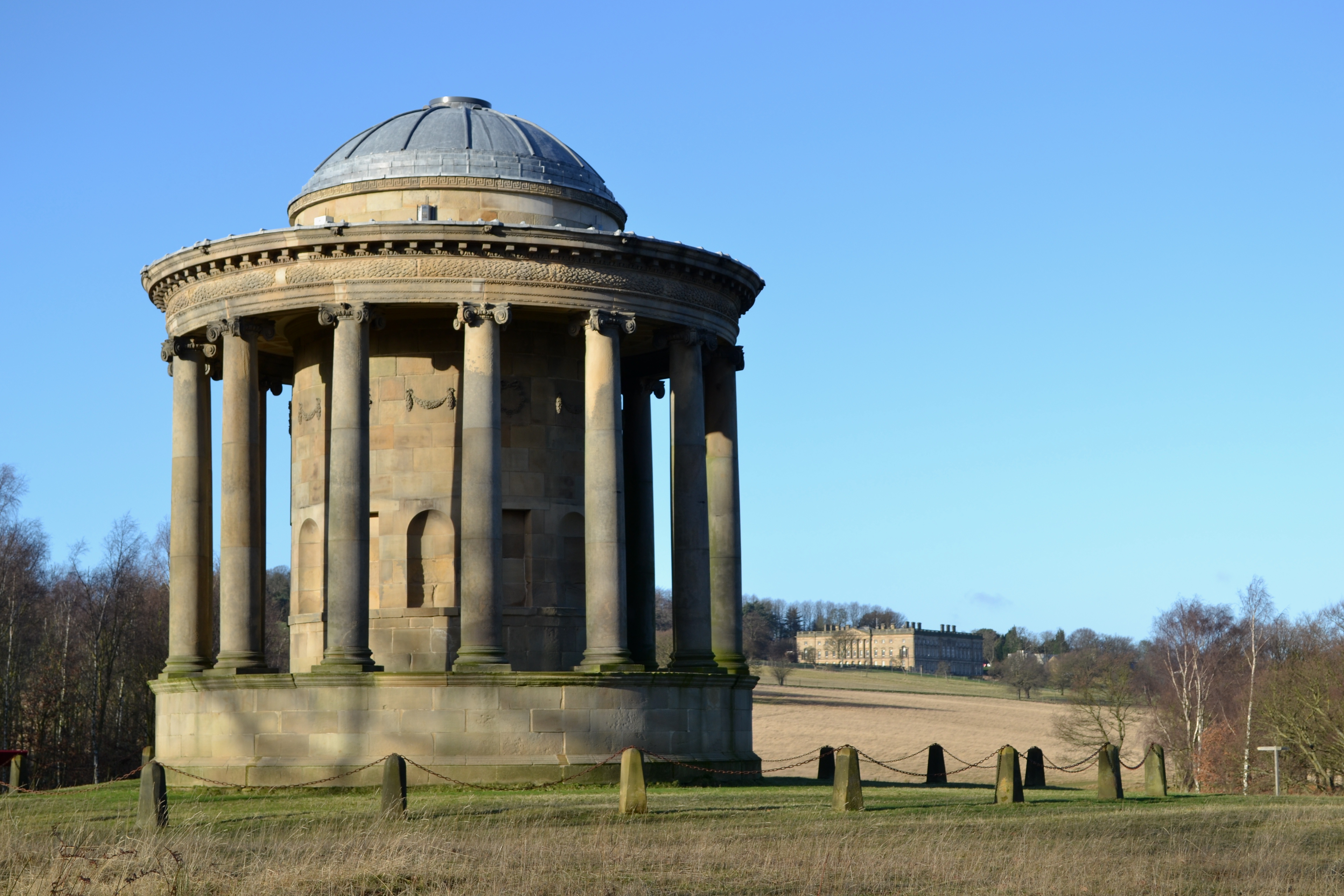Lever Park, a Grade II listed country park between RivingtonVillage in the Borough of Chorley, to the northwest of Bolton, on the fringe of the West Pennine Moors. in Lancashire and Horwich in Greater Manchester, was donated to the people of Bolton in 1904 by Lord Leverhulme. The park covers about 160 hectares (395 acres) on the east bank of the Lower Rivington ReservoirThe Rivington Reservoir Chain, or Rivington Pike Scheme, was built for Liverpool Corporation Waterworks between 1850 and 1857 by Thomas Hawksley. and contains several listed structuresStructure of particular architectural and/or historic interest deserving of special protection. including a folly
Ornamental structure with no practical purpose, built to enhance a designed garden or landscape. that is a scale model of Liverpool Castle, two ancient barns and Rivington Hall. The park is accessed by Rivington Lane, which runs north/south between Rivington and Horwich, bisecting the park. It is separated from Lever’s Rivington GardensRivington Gardens cover about 45 acres of the steep west-facing slopes of Rivington Moor at the edge of the West Pennine Moors in Lancashire. by meadowland.
History
When the Rivington estate was offered for sale to Liverpool Corporation, owners of the Rivington reservoir chain, in 1899 the corporation declined to buy it. Instead William Lever bought the estate, and in 1901 financed a country park as a gift to the people of his hometown, Bolton, and maintained it during his lifetime. The park, still unfinished, was opened in 1904 and completed in 1911.[1]
The park was opened to the public on 18 May 1904 despite objections from Liverpool Corporation, who feared the water would become contaminated. Lever invited the town councils of Liverpool and Bolton to a luncheon to diffuse friction. Mr W. Mason, an old schoolmaster from Bolton declared the park open, music was played and trees were planted. Luncheon for the dignitaries was served in the restored old barn.[2] Lever again entertained local dignitaries in October 1911 when he opened a museum of Georgian art in Rivington Hall. By then the avenues of trees were planted and the parkland had been stocked with deer.[3]
The park was added to Historic England’s Register of Parks and Gardens of Special Historic Interest in 1986,[1] and contains several listed structures.
The Grade II* listed Rivington HallGrade II* listed former manor house in Rivington, Lancashire, England, the successor to a 15th-century building that was built near to the present building. in the park’s north-east corner was restored. Bolton architect Jonathan SimpsonArchitect who was born, educated and practised in Bolton., a school friend of Lever, restored and altered Rivington Hall Barn to provide shelter for visitors. The cruck barn is now Grade II listed. Simpson also altered Great House Barn, also Grade II listed, on the west side of Rivington Lane. Great House Farmhouse and Cottage to the south of the barn were converted to provide visitor facilities in the late 20th century.[1]
Country park
Lever commissioned Thomas MawsonEarly 20th-century garden designer, landscape architect and town planner. to design Lever Park to incorporate the area’s natural moorlandDominant landscape of Britain's uplands, including many of its national parks. topography and water features. The parkland, between the east side of the Lower Rivington Reservoir and Rivington PikeHill summit on Winter Hill, part of the West Pennine Moors, overlooking the village of Rivington in Lancashire, England., is part of the water catchment for the Rivington Reservoir chain built by Liverpool Corporation in the 1850s. The parkland is divided by Rivington Lane, the road that connects Rivington and Horwich. The parkland consists of open grassland, woodland and avenues of native trees. Some property was demolished and existing woodland was augmented with native trees. New planting took place around Great House Barn and to the east of Rivington and Blackrod High School at the south end of the site.[1]
Immediately to the south of Rivington Hall is a small informal garden surrounded by mature trees. A small lake about 60 metres (197 ft) to the southwest is crossed by a bridge leading to an avenue that runs south-west across Rivington Lane to Great House Barn and the reservoir. Several interconnected paths pass through woodland and parkland. Mawson planned five avenues radiating from the hall, but a less formal approach was used. Simpson designed a folly
Ornamental structure with no practical purpose, built to enhance a designed garden or landscape., a reconstruction of Liverpool CastleFolly in the form of a replica of Liverpool Castle, in Lever Park, Rivington. on a promontory overlooking the reservoir. It was started in 1912, but not completed. A footpath along the reservoir passes through woods and round Top o’th’ Hill Farm.[1]


